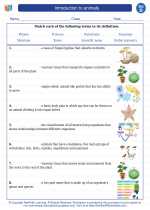Leather
Leather is a durable and flexible material created by tanning animal rawhide and skins. It is used in a variety of products such as clothing, shoes, belts, bags, and furniture. The process of making leather involves several steps, including curing, tanning, and finishing. Let's take a closer look at the process and properties of leather.
How is Leather Made?
The production of leather begins with the curing of raw animal hides. This process involves preserving the hides to prevent decomposition. After curing, the hides undergo tanning, which involves treating them with tannins to stabilize the collagen proteins in the skin. Tanning can be done using vegetable tannins, mineral tannins, or synthetic tannins. Once tanned, the leather is further processed and finished to enhance its appearance and durability.
Types of Leather
There are several types of leather, each with its own characteristics and uses:
- Full-grain leather: This type of leather retains the original grain of the animal hide and is known for its durability and natural appearance.
- Top-grain leather: Top-grain leather is sanded and refined to remove imperfections, resulting in a smooth and uniform surface.
- Split leather: Split leather is derived from the lower layers of the hide and is less durable than full-grain or top-grain leather.
- Bonded leather: Bonded leather is made from scraps of leather that are bonded together with adhesives. It is less expensive but also less durable than other types of leather.
Properties of Leather
Leather possesses several unique properties that make it a popular material for various applications:
- Durability: Leather is known for its strength and resilience, making it suitable for long-lasting products.
- Flexibility: Despite its durability, leather remains flexible, allowing it to conform to different shapes and movements.
- Breathability: Leather is breathable, allowing air to pass through, which makes it comfortable to wear.
- Aesthetic appeal: Leather's natural texture and appearance give it an aesthetic appeal that adds value to products.
Study Guide
Here are some key points to remember about leather:
- Describe the process of making leather, including curing, tanning, and finishing.
- Identify the different types of leather and their characteristics.
- Explain the properties of leather that make it a desirable material for various products.
Now that you have a better understanding of leather, you can appreciate its versatility and significance in the production of goods.
.◂Science Worksheets and Study Guides Fourth Grade. Introduction to animals

 Worksheet/Answer key
Worksheet/Answer key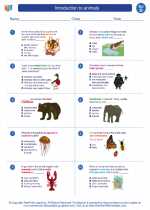
 Worksheet/Answer key
Worksheet/Answer key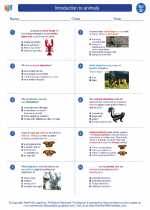
 Worksheet/Answer key
Worksheet/Answer key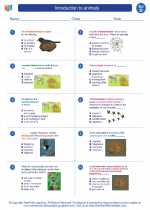
 Vocabulary/Answer key
Vocabulary/Answer key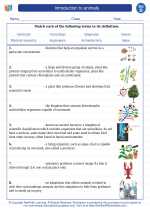
 Vocabulary/Answer key
Vocabulary/Answer key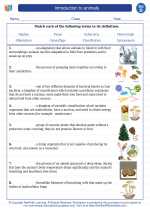
 Vocabulary/Answer key
Vocabulary/Answer key
 Vocabulary/Answer key
Vocabulary/Answer key